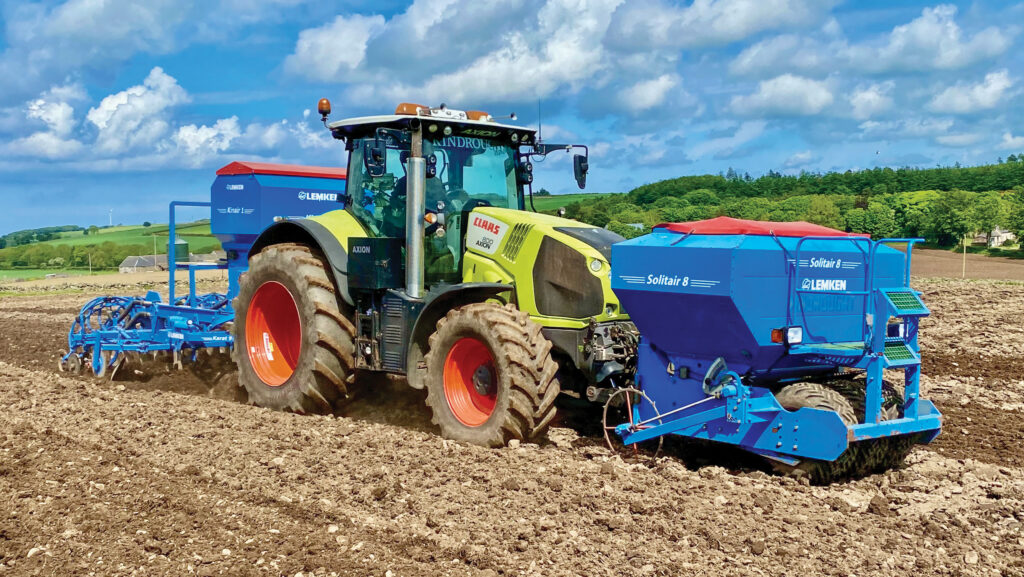Inventions Comp 2025: Craig Grant’s Kinair bean and OSR drill
 © Brian Penny
© Brian Penny Aberdeenshire farmer Craig Grant is our complex category runner-up.
He built a 3m bean drill after committing to incorporating more home-grown protein into his hens’ ration.
Rather than start from scratch, he opted to marry two Lemken implements he was already very familiar with – a Karat 9 stubble cultivator and a Solitair drill.
See also: Yorkshire farmer assembles a pair of tine drills for £10k
The Karat was modified first, with the relatively narrow points on its 11 auto reset legs swapped for wider versions that cut, lift and boil the topsoil, and mix in muck and straw.
He also he strengthened the headstock and added extra bracing to handle the weight of a hopper on top and a coulter bar at the back.
The second stage of the build started with sourcing a donor Solitair drill. Its 1t hopper was hoisted off, shot-blasted and painted, then mounted atop the Karat on laser-cut brackets.
The metering unit and controls were in decent shape, but all the bearings, bushes and oil pipes were replaced, and he fitted a set of access steps up the offside.
Seed is run through two stainless-steel pipes to the disc coulters, with another pair of pipes acting as the conduit for fertiliser from a second hopper mounted on the front of the tractor.
Wider spacing
On the back are the Solitair’s original row units, albeit fitted to a new coulter bar at 200mm centres that gives the crop more light and space than the standard 150mm setup would allow.
Craig also fitted a sensor on the frame that shuts the seed flow as the drill lifts and the packer subsequently drops.
When sowing rapeseed, a set of Lemken angled tines are mounted behind the Karat’s double-D packer to tickle tilth into the channels it leaves, ensuring the seeds aren’t sown too deep.
For beans, those tines are moved to mounting points on the rear coulter press wheels to allow for deeper drilling and to provide some extra consolidation.
The project cost £15,000.

